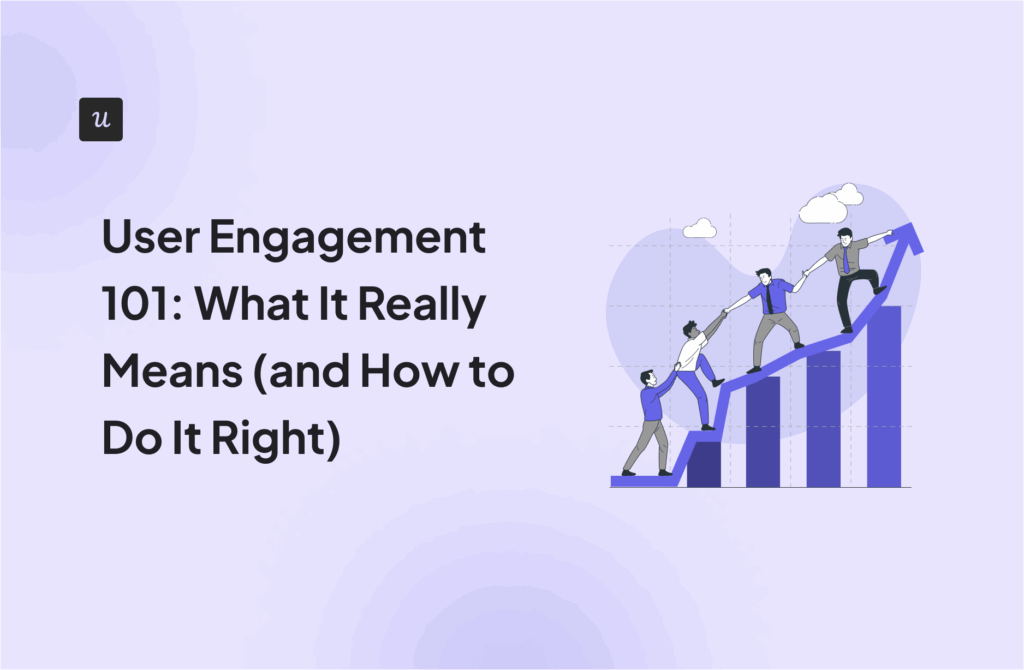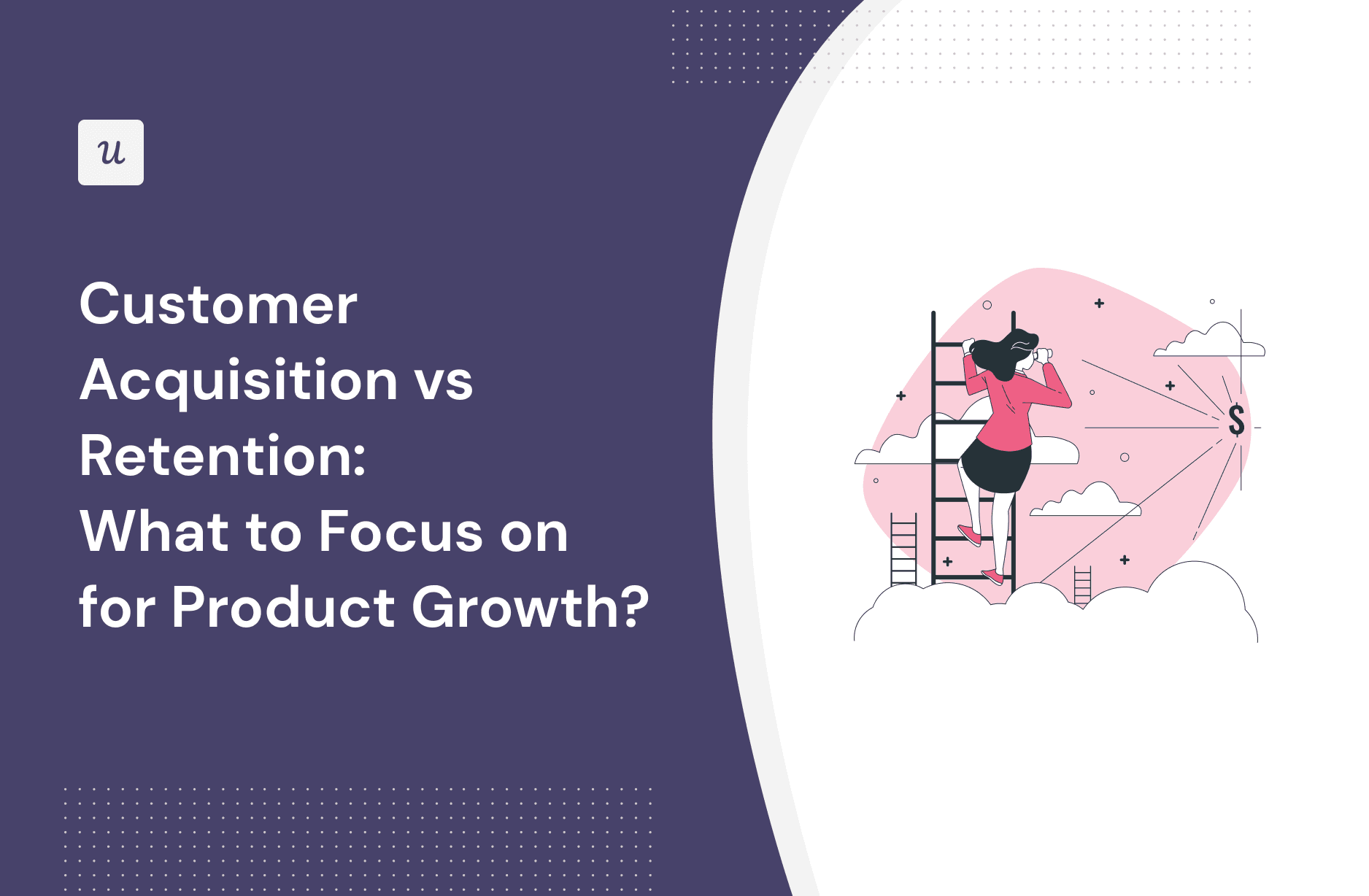
Try Userpilot Now
See Why 1,000+ Teams Choose Userpilot

What is customer acquisition?
Customer acquisition refers to the process through which a business gains new customers.
This vital aspect of business strategy involves identifying potential customers, attracting them to the company, and persuading them to purchase.
It encompasses a range of marketing and outreach tactics, including advertising, promotional campaigns, and content marketing, all tailored to create awareness and interest in the company’s products or services.
What is customer retention?
Customer retention keeps existing customers engaged and committed to a brand or product.
This strategy focuses on creating long-term customer relationships through continuous satisfaction and loyalty.
It involves various activities like providing exceptional customer service, offering loyalty programs, soliciting feedback, and regularly updating products or services.
Effective customer retention leads to repeat business, word-of-mouth referrals, and a strong, loyal customer base, which is crucial for sustainable business growth and profitability.
The key differences between customer acquisition and retention
Understanding the key distinctions between customer acquisition and customer retention is crucial for effective business strategy.
The biggest difference lies in their core objectives and impacts: customer acquisition is about increasing the number of customers, whereas retention focuses on enhancing user lifetime value and loyalty.
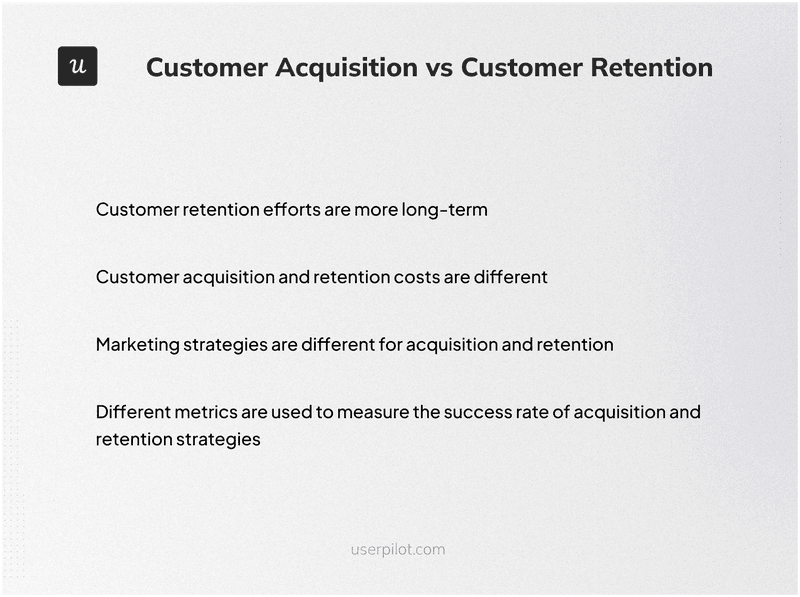
Customer retention efforts are more long-term
Customer retention strategies are essential in building and maintaining a stable customer base by maximizing the lifetime value of each customer.
These strategies go beyond the initial engagement, focusing on nurturing a long-term customer relationship.
This involves understanding their needs and preferences, offering personalized experiences, and consistently delivering value that exceeds their expectations.
By doing so, businesses can turn one-time buyers into loyal customers who make repeat purchases and act as brand advocates, bringing in new customers through word-of-mouth recommendations.
Customer acquisition and retention costs are different
In terms of costs, Customer Acquisition Cost (CAC) is a vital metric, representing the total cost spent on acquiring a new customer.
You calculate customer acquisition costs by dividing total acquisition costs by the number of new customers. This metric is essential for understanding the effectiveness of acquisition strategies.
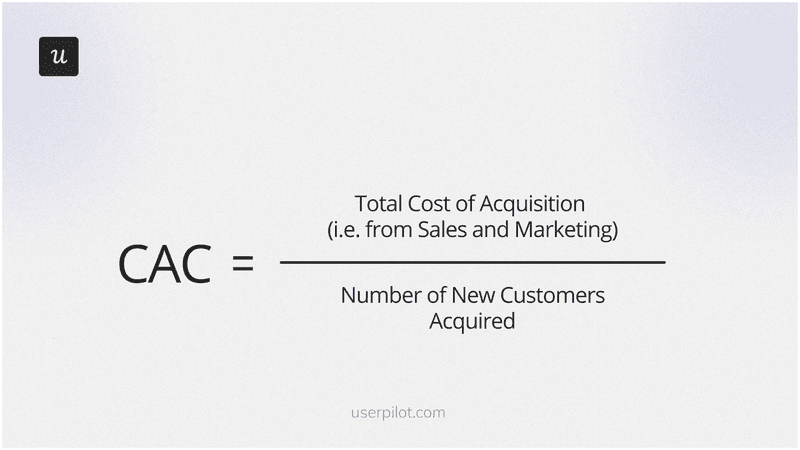
On the other hand, Customer Retention Cost (CRC) reflects the cost associated with retaining existing customers, calculated by dividing total retention costs by the number of customers retained.
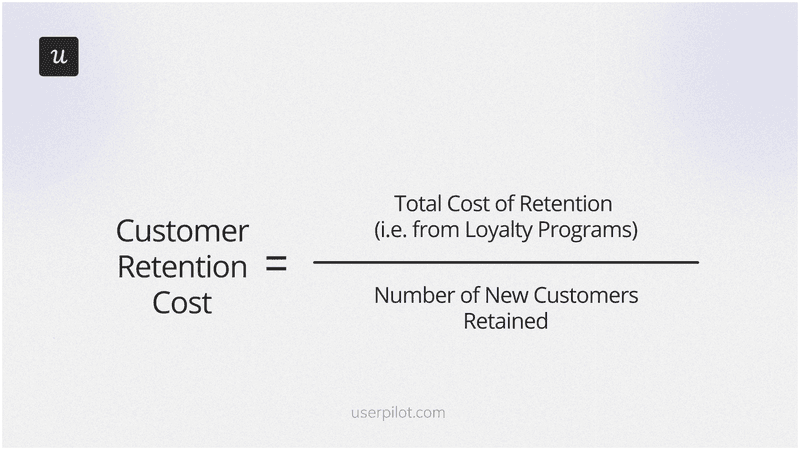
Customer retention costs are important for measuring the value of customer retention efforts.
Marketing strategies are different for acquisition and retention
Marketing strategies focused on customer acquisition predominantly utilize external campaigns that extend beyond the direct interfaces of the business. These strategies leverage various channels and techniques to attract new customers.
For example, content marketing plays a pivotal role in this approach. It involves creating and distributing valuable, relevant, consistent content to attract and engage a clearly defined audience. The aim is to establish authority, raise brand awareness, and drive profitable customer action.
Similarly, Search Engine Optimization (SEO) is another critical component of acquisition strategies. SEO involves optimizing a website to rank higher in search engine results, increasing visibility, and attracting potential customers searching for related products or services online.
On the other hand, customer retention strategies primarily focus on the current customer base and are implemented within existing customer interfaces such as mobile apps or portals. These strategies engage and satisfy existing customers, encouraging them to continue using the product or service.
A common retention tactic is the implementation of customer loyalty programs. These programs reward repeat customers for their continued business, often through points, discounts, or exclusive offers, fostering a sense of value and appreciation among customers.
Different metrics are used to measure the success rate of acquisition and retention strategies
The success of customer acquisition is measured using metrics such as customer acquisition cost, customer count, close rate, and Average Revenue Per User (ARPU), providing insights into the efficiency and effectiveness of these strategies.
For customer retention, key metrics include retention rates, churn rate, and customer lifetime value, offering a perspective on how well a business maintains its existing customer base and the long-term value derived from them.
When you should focus on customer acquisition?
Balancing customer acquisition and retention is crucial for any business.
However, there are specific scenarios where focusing on customer acquisition takes precedence.
Understanding these scenarios can guide enterprises in allocating resources and efforts effectively.
You are launching a new product and need to acquire new customers
Acquisition efforts become critical when entering a new market or launching a new product to help increase brand visibility and acquire customers.
Businesses can establish a foothold in new market segments by effectively targeting and acquiring new customers and creating initial traction for their new products.
Market share is low
When a business’s market share is low, prioritizing customer acquisition is key to avoid being overshadowed by competitors.
A limited customer reach can lead to dominance by competitors, potentially reducing revenue and market presence.
Focusing on acquisition in such scenarios helps to expand market reach and prevent competitors from consolidating their position.
You aim to grow your existing customer base
If the primary business goal is expansion, both in terms of customer base and revenue generation, then putting more emphasis on customer acquisition strategy is necessary.
This involves identifying and targeting new customer segments to expand the customer base, which can lead to financial growth through increased revenue and market influence.
The customer churn rate is low
A low customer churn rate indicates a business already has a strong customer retention rate, meaning it consistently provides high value to its existing customers.
In this case, the company can benefit from shifting its focus towards customer acquisition to grow its revenue further.
Since existing customers are already very satisfied and loyal, leveraging this stability to attract new customers can be a strategic move to enhance overall business growth.
When you should focus on customer retention?
While balancing customer acquisition and customer retention is vital for business success, there are times when focusing on retention becomes exceptionally crucial.
Understanding and recognizing these scenarios can help businesses allocate resources more effectively and ensure long-term stability and growth.
You have a high customer churn rate among your existing customers
A high churn rate often signals customer dissatisfaction with your product or service. In such cases, it’s imperative to double down on retention efforts.
This involves identifying the reasons behind the dissatisfaction and addressing them promptly.
Improving customer experience, handling grievances, and enhancing the overall value of your product or service are critical steps in reducing churn and retaining customers.
Customer acquisition costs are greater than customer lifetime value
When the cost of acquiring a new customer exceeds the revenue they bring over their lifetime, it’s a clear indicator to refocus on retention.
Increasing retention rates can balance out customer acquisition costs. Ensuring your customers stay longer and continue to find value in your offerings is critical in ensuring their customer’s lifetime value exceeds the cost to acquire them.
Business relies on recurring revenue
For businesses operating on a subscription-based model, high retention rates are essential. Such models depend heavily on the continued patronage of existing customers.
While high customer acquisition numbers are important, the focus should be on keeping current customers satisfied and subscribed. Increasing retention rates should be a priority unless compelling reasons exist to focus more on acquisition.
You want to increase revenue
Increasing revenue through expansion strategies such as upselling and cross-selling is directly tied to customer retention. To effectively upsell or cross-sell, businesses must have a solid base of loyal customers.
Moreover, turning new users into loyal customers is a key retention strategy. The focus should be on nurturing customer relationships, understanding their needs, and providing relevant and valuable offerings.
Where you should focus your efforts: customer acquisition vs retention?
Deciding where to focus your efforts between customer acquisition and retention is a strategic choice that can significantly impact the growth and sustainability of your business. You should prioritize both acquisition and retention to ensure balanced and sustainable growth.
However, emphasizing one largely depends on your current growth path and the specific goals you aim to achieve.
Customer acquisition often takes precedence when a business is in its initial stages or entering new markets. This phase is critical to building a customer base and market presence. Acquisition strategies are essential to attract new customers and create brand awareness.
As the business matures and establishes a solid customer base, the focus gradually shifts toward retention. Retention becomes vital for maintaining a stable revenue stream and fostering long-term customer relationships.
It’s especially crucial for businesses that rely on recurring revenue models, like subscriptions, where customer loyalty directly impacts the bottom line.
The decision also hinges on your current business metrics. For instance, if your customer churn rate is high, it indicates a need to strengthen retention strategies. Conversely, if your market share is low or you’re launching a new product, emphasizing customer acquisition would be more beneficial.
The choice between focusing on customer acquisition or retention is not static but dynamic, changing as your business evolves.
It’s important to regularly assess your business performance, market conditions, and customer feedback to determine which strategy needs more focus at any given time. Doing so can align your efforts with your business objectives, ensuring immediate success and long-term sustainability.
Conclusion
Both customer acquisition and customer retention are important to focus on. Whether it’s just one or both depends on your current goals. What isn’t an option is to ignore both. Doing so will be a potential trip to declining growth for your product.
Ensure you’re gathering the data you need to gain insights from these metrics. And Userpilot is the perfect tool to do so. It can provide insights into what is converting paying customers and what friction points are causing users to churn.
If you want to learn more, book a demo now!





